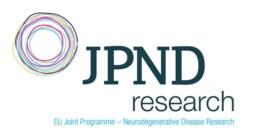Expertise
The Sterneckert group has a strong background in using pluripotent stem cells to model neurodegenerative diseases and identify novel therapeutic strategies. Key research topics have included the role of condensates such as stress granules in motor neurons and ALS. The group developed a model of inflammation in ALS models by using multiple stem cell-derived cell types1, thereby enabling a screening campaign identifying novel protective compounds. In addition, the group used gene editing to generate one of the first isogenic models of a neurodegenerative disease2, and we built on this platform by generating reporter lines for FUS-ALS, which forms condensates in vivo3, enabling the identification of a role for protein-protein interactions in buffering FUS phase behavior4. To facilitate the study of condensates in axons as well as functional neuromuscular junctions in higher throughput, the group developed methodologies microfluidic devices5. In collaboration with Hyman and Alberti, the group has shown that RNA plays an important role in regulating the phase behavior of ALS-associated RNA-binding proteins, including FUS6.
References:
- Höing et al. Discovery of inhibitors of microglial neurotoxicity acting through multiple mechanisms using a stem-cell-based phenotypic assay. Cell Stem Cell. 2012;11(5):620-632. https://doi.org/10.1016/j.stem.2012.07.005
- Reinhardt et al. Genetic Correction of a LRRK2 Mutation in Human iPSCs Links Parkinsonian Neurodegeneration to ERK-Dependent Changes in Gene Expression. Cell Stem Cell. 2013;12(3):354-367. https://doi.org/10.1016/j.stem.2013.01.008
- Marrone et al. Isogenic FUS-eGFP iPSC Reporter Lines Enable Quantification of FUS Stress Granule Pathology that Is Rescued by Drugs Inducing Autophagy. Stem Cell Rep. 2018;10(2):375-389. https://doi.org/10.1016/j.stemcr.2017.12.018
- Marrone et al. FUS pathology in ALS is linked to alterations in multiple ALS-associated proteins and rescued by drugs stimulating autophagy. Acta Neuropathol (Berl). 2019;138(1):67-84. https://doi.org/10.1007/s00401-019-01998-x
- Bellmann et al. A customizable microfluidic platform for medium-throughput modeling of neuromuscular circuits. Biomaterials. 2019;225:119537. https://doi.org/10.1016/j.biomaterials.2019.119537
- Maharana et al. RNA buffers the phase separation behavior of prion-like RNA binding proteins. Science. 2018;360(6391):918-921. https://doi.org/10.1126/science.aar7366






